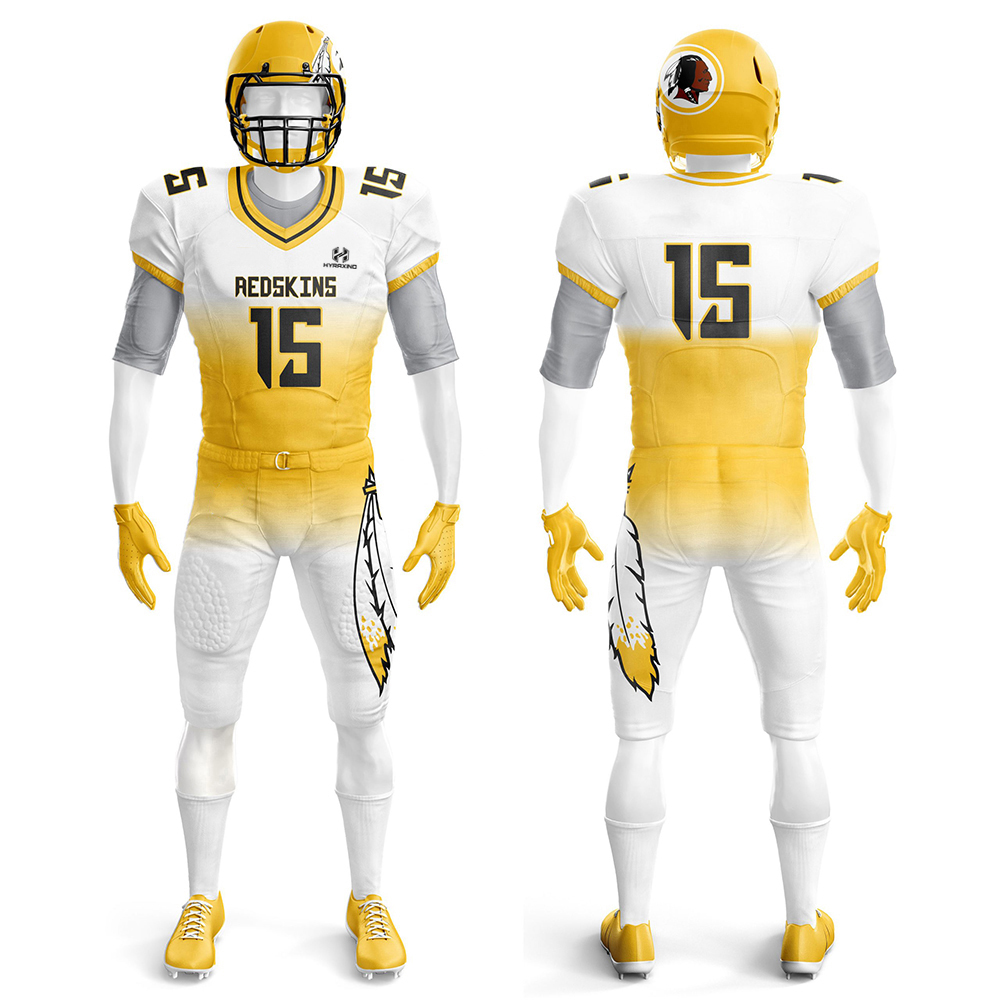Creating American Football Uniforms
Description
- Designing American football uniforms involves combining functionality, aesthetics, and team identity. Here’s a comprehensive description of the various elements you might consider when creating these uniforms:
Helmet: The helmet is a crucial part of the uniform, providing protection for the player’s head. It often features the team’s logo on both sides. The color of the helmet can match the team’s primary color, and some teams incorporate metallic finishes, stripes, or decals to add personality.
Jersey: The jersey is a central part of the uniform. It’s typically made of durable, breathable fabric. Teams often have two main jerseys: one for home games and another for away games. The jersey can feature the team’s primary color as the base, with secondary colors and accents for trim, collar, and sleeves. The team’s name is usually displayed prominently on the front, along with the player’s number. Sponsors’ logos might also appear on the jersey.
Pants: Football pants are designed for mobility and protection. They match the jersey’s color scheme and often have stripes or accents down the sides. Players’ numbers can be displayed on the hips or thighs. The pants usually feature built-in padding to protect the hips, thighs, and knees.
Shoulder Pads: Underneath the jersey, players wear shoulder pads that provide protection to the upper body. These pads are made of hard plastic and foam padding, designed to absorb impacts.
Cleats: Football cleats offer traction and stability on the field. They come in various styles to suit different positions and playing conditions. The color of the cleats can complement the uniform’s overall design.
Gloves: Gloves are worn by players to improve grip, especially for receivers and quarterbacks. These gloves often feature the team’s colors and may have the team logo or other designs.
Socks: Socks are typically knee-high and can feature the team’s colors, stripes, or other patterns that match the uniform design.
Accessories: Players may wear accessories such as wristbands, armbands, and visors. These can serve functional purposes like wiping away sweat or reducing glare from the sun. They also add to the overall aesthetic.
Team Identity: Uniform designs often reflect the team’s identity and history. This includes color choices, logos, and even design elements that are specific to the team’s region or culture. The goal is to create a uniform that fans can easily recognize and associate with their favorite team.
Innovation: Uniform design has evolved over the years, incorporating new materials and technologies to enhance performance and safety. This might involve using lightweight, moisture-wicking fabrics or incorporating padding in strategic areas for better protection.
When creating American football uniforms, it’s essential to strike a balance between aesthetics, functionality, and team representation. The design should empower players to perform their best while instilling a sense of pride and unity among the team and its fans.










Reviews
There are no reviews yet.